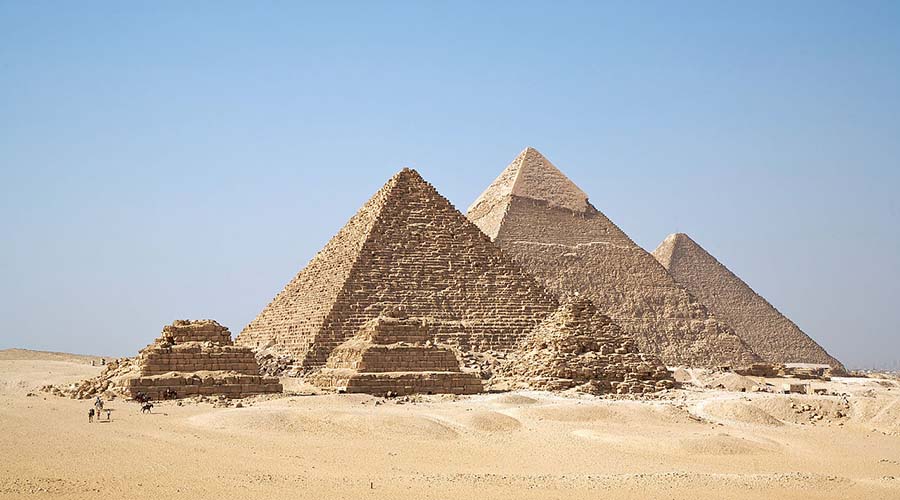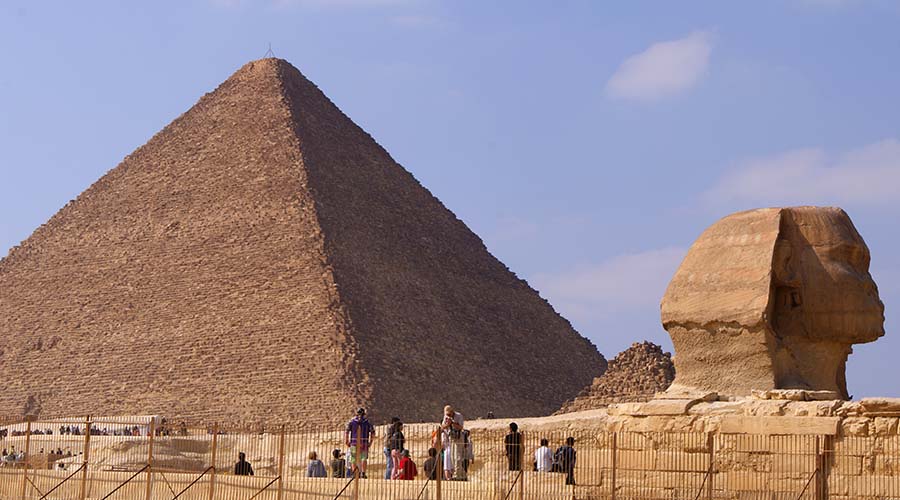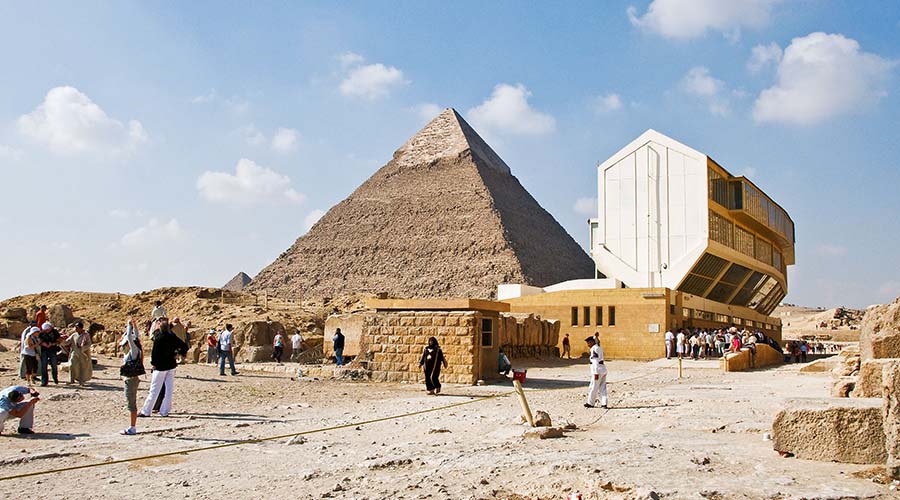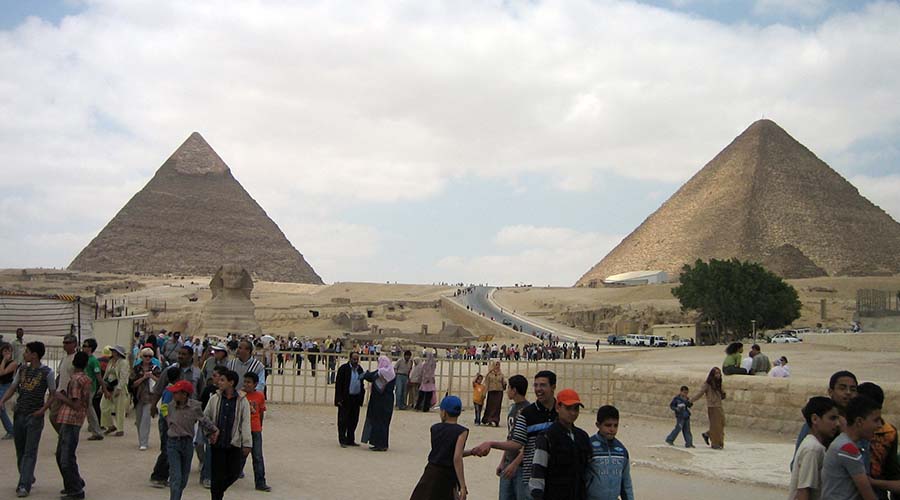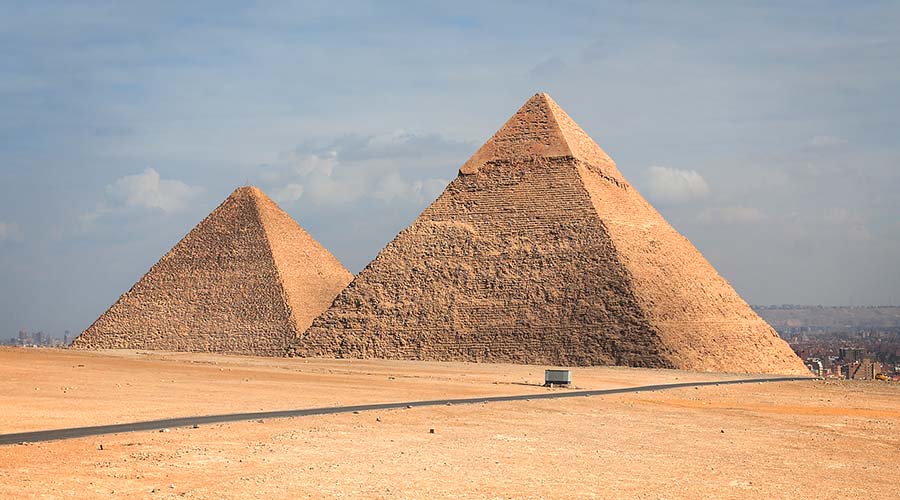Giza Plateau Cairo Egypt tours, prices, booking, reviews
Giza Plateau Cairo is a plateau which located in Giza, Egypt. The famous Giza Necropolis located in this geographical area. It characterized by a sandy, desert climate and terrain with little vegetation. Khufu became the king of Egypt after the death of his father Sneferu. There was no convenient space remaining for Khufu’s own pyramid complex at Dahshur. It is where Sneferu buried. Khufu moved his court and residence farther north. Giza Plateau located only a few kilometers south of Cairo. It is several hundred meters from the last houses in the southernmost part of the city proper. Giza Plateau is where a limestone cliff rises from the other side of a sandy desert plateau. The ancient Egyptians called this place Imentet or kher neter.
In fact, Giza Plateau is a part of the Middle Eocene Mokattam Formation. This is according to a treatise on the geology of Giza Plateau in Cairo. Moreover, it dips southeast, comprising limestone and dolomite. To the south are the Mokattam and dolomite limestone. They are overlain by the limestone and sandy marl of the Upper Eocene Maadi Formation. To the north and east is the Mokattam Formation. It characterized by two steep escarpments about 30 meters (92 feet) high. Moreover, it continues to the Great Sphinx ditch. It must at one time formed a high peak. From there, the stonemasons cut the core blocks for the Great Pyramid. The older pyramids of the third and early fourth dynasty built on thick layers of marl and slate. These marl layers were easier to dig than limestone.
Further details about Giza Plateau Cairo Egypt:
In fact, excavation of the large shafts extended about 30 meters beneath the step pyramids. Moreover, it accomplished in a reasonable time. However, there was also a serious disadvantage. It was because the marl layers could not support their weight. The under-layer gave way, and the construction became unstable. This in fact happened with the South Pyramid at Dahshur. It is where cracks and serious damage appeared in the corridor system and in the chambers. That is why the pyramid had to abandoned. Khufu planned his own ambitious pyramid. He looked for a solid rock base nearby quarries and a dominating position overlooking the Nile Valley. He of course found it at Giza Plateau Cairo. In fact, the plateau subdivided into two groupings of monuments, defined and separated by a wadi.
The larger grouping consists of the three Great pyramids of Khufu, Chephren and Menkaure. Moreover, it also includes Great Sphinx and the private mastabas of the nobility. The second grouping, located on the ridge to the southeast. It contains many private tombs of citizens of various classes. The majority of the monuments of the larger grouping made from limestone. It quarried and transported to the site. The tombs of the smaller grouping carved out of the native living rock. The three Great Pyramids are the most famous and prominent monuments at Giza Plateau. It was actually a Necropolis almost since the beginning of Pharaonic Egypt. A tomb just on the outskirts of Giza plateau dates back to the reign of the First Dynasty Pharaoh. Wadj Jar sealing discovered in a tomb in the southern part of Giza plateau Cairo. It mentions the Second Dynasty Pharaoh Ninetjer.
More details about Giza Plateau Cairo Egypt:
To build his complex, he had to clear away many of the old tombs. He had to fill in their shafts or even destroy them. Khufu pyramid is the largest of all the pyramids in Egypt. The Khufu pyramid surpasses the Red pyramid at Dahshur built by only ten meters. The Red pyramid built by Khufu’s father father Snefru. On its southwest diagonal is the pyramid of Khufu’s son, Chephren (Khafre). Although it is smaller, a steeper angle results in the illusion that they are the same size. The Chephren’s pyramid appears taller since it is on higher ground. The notion that it done on purpose to out-do his father is without a question. It occupies the central point and has the illusion of greater size. It is still has some of its casing stones intact.
Mistaken to as the Great Pyramid, something would no doubt please Chephren in case he alive today. Along the southwest diagonal is the smallest of the three great pyramids. It is Menkaure pyramid. He is the son of Khafre. Menkaure pyramid is not entirely limestone. The uppermost portions are brick, much like the several Pyramids at Dahshur. One theory is that Menkaure died before completing his pyramid. The remaining construction hastily done to finish it in time for the burial. It is also not along the diagonal line that runs through the Great Pyramid and the Second Pyramid. It is a hundred meters to the southeast. An idea has emerged in the last few years. It says that the three large pyramids of Giza actually meant to be in an alignment.
Further details about Giza Plateau Cairo Egypt:
This to resemble the three “belt” stars in the constellation Orion. They are Alnitak, Alnilam and Mintaka. This theory discounted by the majority of Egyptologists. Some do believe it is a point to ponder. The center of the pyramid does not line up with its larger counterparts. The southeast sides of all three pyramids are in alignment. All three pyramids stand empty. They maybe plundered during the political unrest. The political unrest ended the Old Kingdom when the monarchy collapsed. Yet there are the occasional surprises. Airtight pits along the southern and eastern walls of Khufu’s pyramid contain boats. They were not small ritual boats. They are functional funerary barges with 40-ton displacements.
One of the excavated in 1954. It is now in the Solar boat museum. Exactly how big Giza Plateau is may never known. Excavations have continued to find new tombs and artifacts. Bezoni, Caviglia, Perring and Vyse began the first systematic study of Giza Plateau. It was in the early 1800s. The plateau explored and excavated more thoroughly than any other site in Egypt. It is more than any other site in the world. Throughout the Old Kingdom, the cemetery of Giza Plateau remained the most prominent. It is even when the kings moved again to Southern Sakkara. Architects of the ‘Inti family’ continued to live in the pyramid town of Khufu. The had their family tombs at Giza plateau. Inti family constructed the pyramids of the 5th and 6th Dynasties.
More details about Giza Plateau Cairo Egypt:
In fact, the pyramid town of Khufu and the cemetery of Giza both abandoned. It was during the First Intermediate Period. Moreover, they remained so during the Middle Kingdom. The pyramids opened and plundered. The private tombs not ignored by thieves either. Furthermore, the causeways and temples used as quarries by the architects of the kings of the 12th Dynasty. This all changed completely during the New Kingdom. The kings of the 18th Dynasty showed deep respect for the pyramids. Giza plateau gained considerable religious significance. It was as the center of royal worship to the Great Sphinx. Moreover, princes and kings of the 18th and 19th Dynasties erected stelae between the paws of the Sphinx.
It no longer seen as a royal statue. In fact, it seen as an image of the sun god Harmachis. Amenhotep II dedicated a small temple to Harcachis to the northeast of the Sphinx. On foundation tables of that temple, the Sphinx also named Harmachis-Hauron. Hauron was the name of a Syrian-Palestinian god of the netherworld. A community of Syrian-Palestinians living near the Great Sphinx identified with his image. Ramesses II installed a sanctuary within the forepaws of the Sphinx. In the Late period, Osiris became the dominant god of Giza Plateau. He took over the cult locations of Rostau from Sokar. He installed his cult in the Sphinx. Massive pedestals added to the body of the Sphinx. They are on which chapels of Osiris and Isis stood. Isis became known as the “Lady of the Pyramids”.
Further details about Giza Plateau Cairo Egypt:
During the Sixth century BC onward, Greek travelers admired the pyramids at Giza Plateau. They placed monuments in the list of the Seven Wonders of the Ancient World. After the Pharonic Period, stones from the monuments taken. They used to build buildings in nearby Cairo. First, the polished white limestone “casing” taken. And then the softer core stones taken. Many of Cairo’s oldest buildings built partly from stones from the pyramids. This destruction continued well into the Nineteenth Century. It was until preservation efforts and a resurgence of national pride put a stop to it. The pyramids not vandalized. They would still remain to this day much as they were when they built. As the saying goes, “Man fears Time, but Time fears the Pyramids”.

